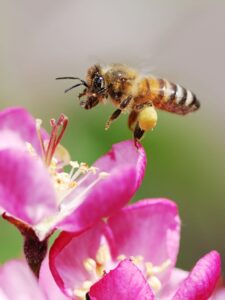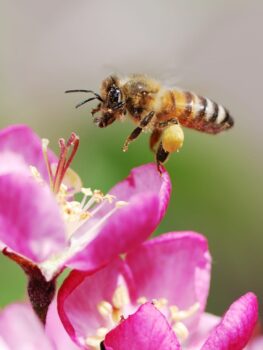Introduction
In the intricate web of life on Earth, honeybees play a crucial role in maintaining the delicate
balance of our ecosystems. As pollinators, these remarkable insects contribute to the
reproduction of flowering plants and the production of numerous crops that sustain both
human and animal life.
Unfortunately, honeybees face significant challenges today, including habitat loss, pesticide
use, climate change, and diseases. The declining honeybee populations demand our
attention and action to ensure a sustainable future for our environment.
In this blog post, we will explore the importance of honeybees, the threats they face, and
what we can do to save them for the greater good of our planet.
The Role of Honeybees in the Environment
Honey Bees, specifically the European honey bee species (Apis mellifera), are key
pollinators in various ecosystems worldwide. They transfer pollen from the male parts
(anthers) of flowers to the female parts (stigmas), enabling the fertilisation and production of
seeds and fruits.
It is estimated that approximately 75% of the world’s food crops depend, at least in part, on
pollinators like honeybees. These crops include fruits, vegetables, nuts, and seeds.
Moreover, honeybees also contribute to the pollination of plants that provide habitats and
food sources for other wildlife, thereby supporting biodiversity.
The Challenges Facing Honeybees
Habitat Loss:

availability of suitable foraging and nesting sites for honeybees.
Pesticide Use:
The widespread use of pesticides, particularly neonicotinoids, can harm honeybees. These
chemicals affect their central nervous system, impair their foraging abilities, weaken their
immune systems, and lead to colony losses.
Climate Change:
Altered climatic patterns disrupt the synchrony between flowering plants and honeybees,
affecting their foraging and reproductive cycles. Extreme weather events like
heat waves and prolonged droughts can also directly impact honeybee colonies.
Diseases and Pests:
Honeybees face various diseases and pests, including Varroa mites, fungal infections, and
viruses. These factors weaken colonies and contributed to their decline.
Saving Honeybees for Environmental Good
Protecting Habitat:
Preserving and creating habitats that provide diverse sources of pollen and nectar are
essential for honeybees. Planting native wildflowers, creating pollinator-friendly gardens, and
avoiding excessive urbanisation can help ensure adequate foraging opportunities.
Reducing Pesticide Use:
Adopting integrated pest management practices that minimise the use of harmful pesticides
is crucial. Promoting organic farming methods and encouraging the development of
bee-friendly alternatives to chemical pesticides can significantly benefit honeybee
populations.
Supporting Beekeepers:
Beekeepers play a vital role in honeybee conservation. Supporting local beekeepers,
purchasing locally-produced honey, and advocating for sustainable beekeeping practices
can help maintain healthy honeybee populations.
Raising Awareness:
Spreading awareness about the importance of honeybees and the threats they face is critical to
inspiring collective action.Educating communities, schools, and policymakers about the
the critical role of pollinators can lead to policy changes and initiatives that prioritise their
protection.
Conclusion
The dwindling honeybee populations should be a wake-up call for all of us. As conscientious
stewards of the Earth, we must recognize the significance of these tiny creatures in our
ecosystems and the intricate role they play in our food systems.
By taking action to protect honeybees and their habitats, we are not only safeguarding their
existence but also securing a sustainable future for ourselves and the entire planet.
Together, let’s create a world where the hum of honeybees resounds, and the harmony of
nature thrives

